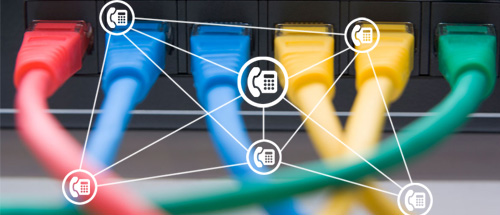Telecommunication networks
Telecommunication networks are transmission systems enabling information to be transmitted in analogue or digital form between various different sites by means of electromagnetic or optical signals. The information may consist of audio or video data or some other type of data. The networks are based either on wired or wireless infrastructures. Typical examples of telecommunication networks are the telephone landline network, the mobile network, cable TV networks or the internet.
Telecommunication networks for two-way speech transmission (phone networks)
Various types of phone network can be used for two-way speech transmission. In the early days of the telephony era, the phone network was wire-based and transmitted the speech signals by means of electromagnetic, analogue signals. Nowadays, the phone networks are digital and can be wire-based (landline network) or wireless (mobile network). The system for connecting subscribers has progressed from being purely circuit-switched to packet-switched.
Telecommunication networks for data transmission
Telecommunication networks for transmitting data formerly used numerous different protocols. Owing to the triumph of the internet, the internet protocol (IP) has gained widespread acceptance as standard protocol for data transmission. Nowadays, virtually all data networks are IP-based. The data in these networks are divided up into individual data packets and tagged with the destination and source addresses. At the network nodes, the destination addresses are evaluated by so-called routers, and the data packets are sent to the next node along the route to the destination address. In principle, the individual packets can find differing routes through the network and reach their destination at different times. The destination system puts them back in the correct order if necessary.
Merging of speech and data transmission via voice-over IP technology
The increasing efficiency of IP networks, short latency periods and jitter values coupled with high bandwidths make data networks suitable for time-critical real-time applications such as telephony. Thanks to voice-over IP technology, phone networks have now almost fully merged with data networks. This has the advantage for the provider that only one single infrastructure needs to be operated for data and speech transmission. The user benefits from a multitude of new applications providing flexible communication options. This means phone systems can be entirely cloud-based. Users do not need their own system software and can use all the telephone services available from any location with internet access.


